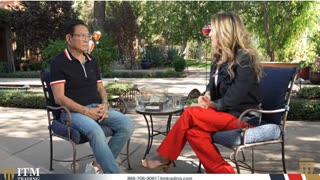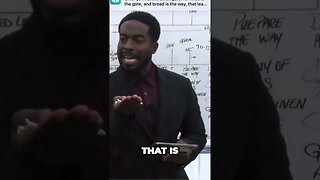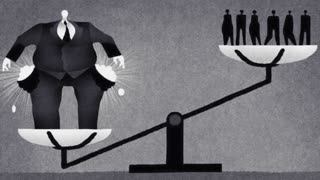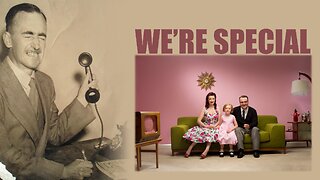Is the Middle Class "Dead Man Walking"
The middle Class makes the USA unique from other countries. During Coivd 19 and the rise of inflation caused by money printing is threatening the very existence of the middle class
The middle-class squeeze refers to negative trends in the standard of living and other conditions of the middle class of the population. Increases in wages fail to keep up with inflation for middle-income earners, leading to a relative decline in real wages, while at the same time, the phenomenon fails to have a similar effect on the top wage earners. People belonging to the middle class find that inflation in consumer goods and the housing market prevent them from maintaining a middle-class lifestyle, undermining aspirations of upward mobility.
The term "squeeze" in this instance refers to rising costs of key products and services coupled with stagnant or declining real (inflation-adjusted) wages. The CAP defines the term "middle class" as referring to the middle three quintiles in the income distribution, or households earning between the 20th to 80th percentiles. CAP reported in 2014: "The reality is that the middle class is being squeezed. As this report will show, for a married couple with two children, the costs of key elements of middle-class security—child care, higher education, health care, housing, and retirement—rose by more than $10,000 in the 12 years from 2000 to 2012, at a time when this family’s income was stagnant." Further, CAP argued that when the middle class is struggling financially, the economy struggles from a shortfall in overall demand, which reduces economic growth (GDP) relative to its potential. The goal of addressing the middle-class squeeze includes: "Having more workers in good jobs—who have access to good education; affordable child care, health care, and housing; and the ability to retire with dignity."
Charles Weston[5] summarizes the middle-class squeeze in this way: "Being middle class used to mean having a reliable job with fair pay; access to health care; a safe and stable home; the opportunity to provide a good education for one’s children, including a college education; time off work for vacations and major life events; and the security of looking forward to a dignified retirement. But today this standard of living is increasingly precarious. The existing middle class is squeezed and many of those striving to attain the middle-class standard find it persistently out of reach." This squeeze is also characterized by the fact that, since the early 1980s, when European integration got into full swing, Belgium, France, Germany, Italy, and the United Kingdom have experienced strong real wage growth, while real wage growth in the United States has remained sluggish for the most part
Causes include factors related to income as well as costs. The costs of imported goods and services such as healthcare, college tuition, child care, and housing (utilities, rent, or mortgages) have increased considerably faster than the rate of inflation.[1] This does not consider that all incomes were increasing, but only that higher incomes were increasing faster. Income is not a zero-sum game. Increasing demand for labor (lower income or skills) would increase incomes.
The Center for American Progress reported in September 2014 that the real (inflation-adjusted) cost of healthcare for middle-class families had risen by 21% between 2000 and 2012, versus an 8% decline in real median household income.[1] Insurance and health care is an important factor regarding the middle-class squeeze because increases in these prices can put an added strain on middle-income families. This situation is exactly what the House of Representatives survey shows regarding health care prices. In 2000, workers paid an average of $153 per month for health insurance coverage for their families, however, by 2005 these numbers had increased to $226 per month.[3] The effects of the price change in health care can be seen in many ways regarding the middle class. The number of people who are uninsured has also increased since 2000, with 45.7 million Americans now without health insurance, compared to 38.7 million at the start of the millennium. Also, 18% of middle-income Americans, making between 40,000 and 59,999 dollars were without health insurance during 2007 and more than 40% of the 2.4 million newly uninsured Americans were middle class in 2003.[15]
Another narrative described by Paul Krugman is that a resurgence of movement conservatism sin
Either way, the shift is visible when comparing productivity and wages. From 1950 to 1970, improvement in real compensation per hour tracked improvement in productivity. This was part of the implied contract between workers and owners
-
 11:25
11:25
TubeChannel
4 months ago"Millionaires Are Middle Class!" - Reality of Being a Millionaire in Today's Society
8 -
 15:02
15:02
Investing For The Future
6 months agoThe middle class is dying!
7 -
 28:07
28:07
Poweraccountabilityleague
6 months agoTHE POOR, THE MIDDLE CLASS AND THE RICH
14 -
 4:17
4:17
PassiveIncomeLiving
4 months ago $0.05 earnedWhy Millionaire Is The New Middle Class
28 -
 37:59
37:59
Larry209
6 months agoThey Have Killed the Middle Class and Now Want America Dead !!!
613 -
 0:47
0:47
Living Waters
11 months agoDeath of the Middle Class #truth #middleclass #endtimes #poor #rich #revalation
25 -
 8:20
8:20
Essays and Ruminations
6 months agoThe Middle Class
254 -
 23:48
23:48
Mac and Mike Video Podcast
1 year agoThe Shrinking Middle Class
16 -
 1:52
1:52
Money Isn't Real
1 year agoWhy the Poor and Middle class are more Greedy than the Rich
9 -
 17:47
17:47
DawsonJJ
11 months agoThe Problem with the Middle Class
14